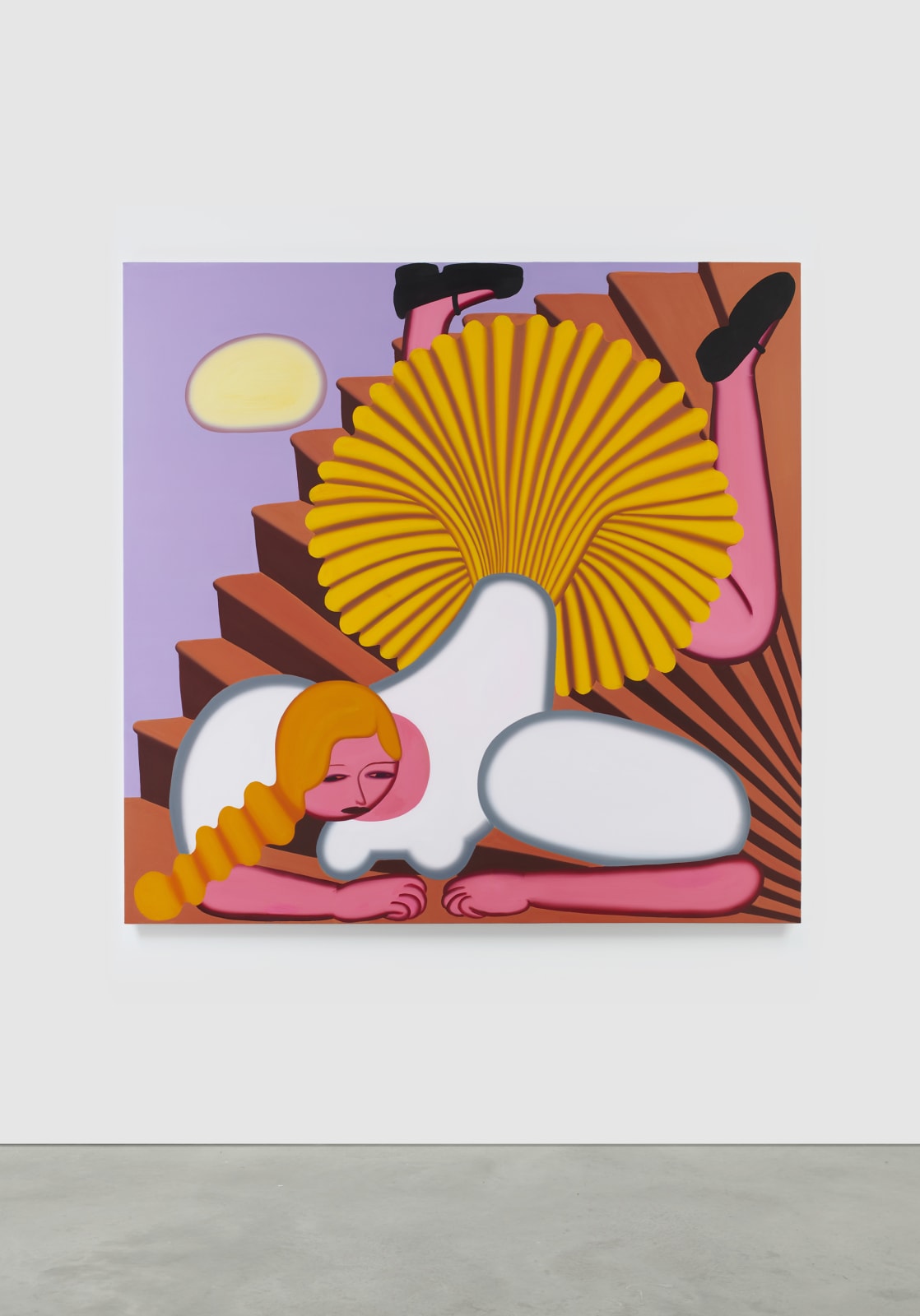-
Artworks






Misstep, 2020
Oil on canvas69 x 71 in
175.3 x 180.3 cmSoldFurther images
Misstep depicts a female figure caught in a moment of slapstick failure as she tumbles down a staircase, her stylized skirt fanning outward as she falls to her hands and...Misstep depicts a female figure caught in a moment of slapstick failure as she tumbles down a staircase, her stylized skirt fanning outward as she falls to her hands and knees. Carrying forward Weaver’s longstanding concerns with form and spatiality, this work playfully contends with what the artist describes as the expectation of "uprightness," drawing out a playful extended metaphor for the figure’s relative moral “standing.” This painting foregrounds the experience of self-awareness that comes with being in public, where one can be undone by one’s own good intentions, or “hoisted with [one’s] own petard.” Here, a winding staircase that recalls the architecture of Paolo Uccello’s Early-Renaissance paintings is distorted with a treacherous play on perspective. For Weaver, “emphasizing the weight and gravity of a figure makes visible the invisible—psychological states like anxiety, sadness, or self-consciousness.” The subject’s flailing, dramatized posture is tempered by an expression of calculated flatness, suggesting that her fall is either an accidental state of vulnerability and exposure, or a performed behavior in which precarity is managed by way of hypervigilant self-control.Exhibitions
Grace Weaver: STEPS, James Cohan, New York, NY, July 15 - September 12, 2020Literature
Jacoba Urist, "Grace Weaver" in Galerie, Fall 2020, p. 29











